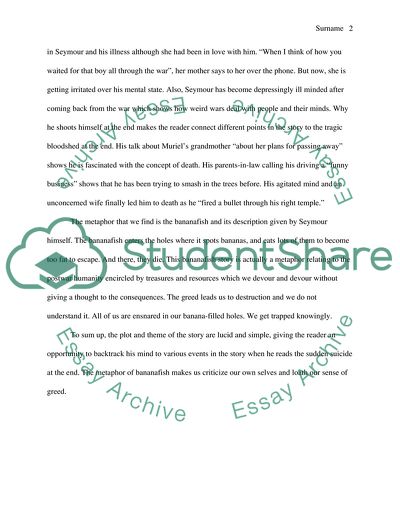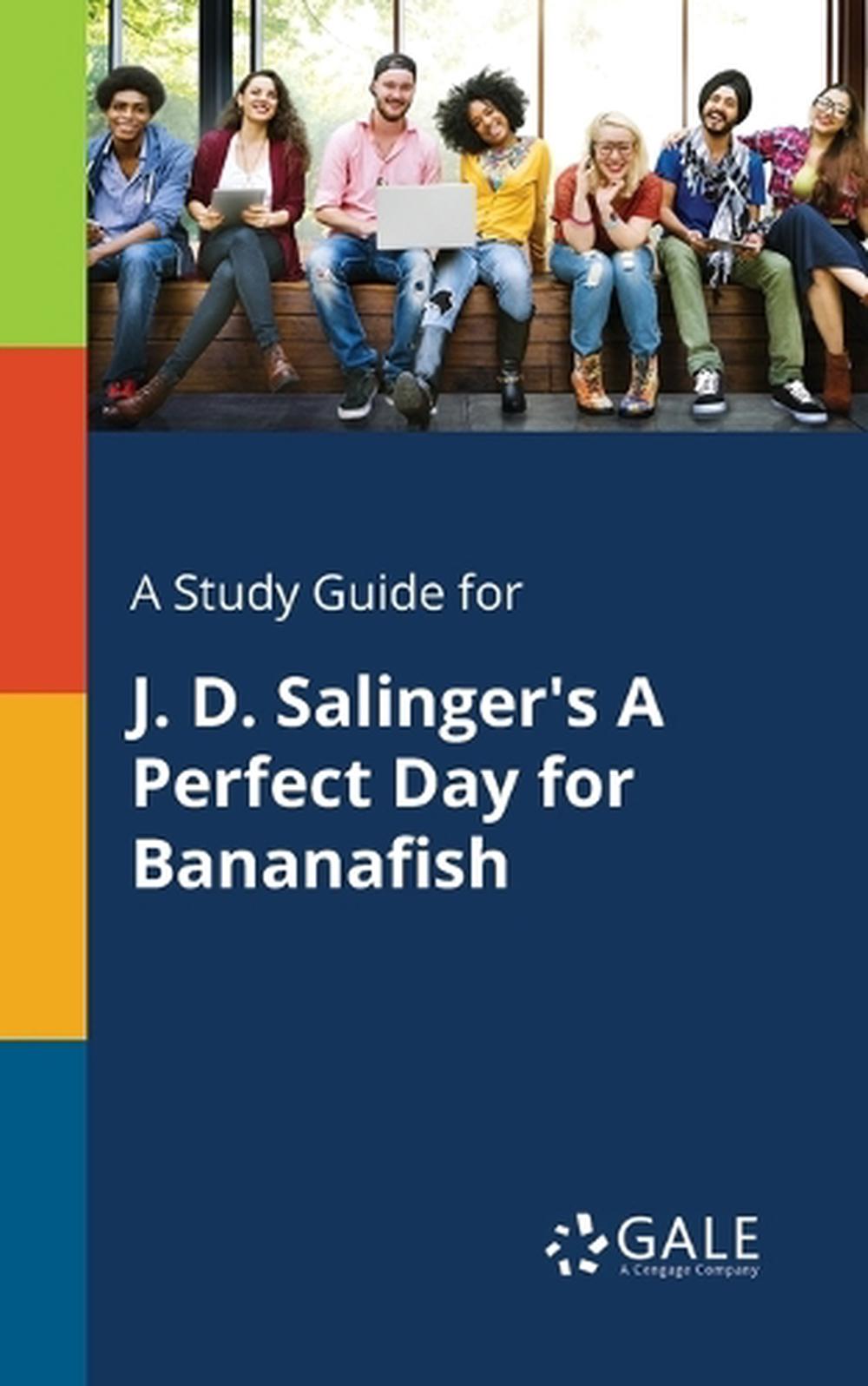

What techniques does Salinger use to make his characters’ conversations sound realistic? Write your paper as though your audience has read the story and that you, as critic, will help them better understand how to interpret it. Some of the possible topics you might consider include the following: Why did Seymour commit suicide? What is the significance of the Bananafish story Seymour tells Sibyl? Why does Seymour become angry at the woman in the elevator? Is Seymour a pedophile? Was this Salinger’s intention in portraying the characters the way he did? How does Salinger use symbols and allusions to enhance the story? Most of the story consists of dialogue. In other words, don′t tell what happened in the story, but rather, tell what the events, characters, elements of irony or symbolism in the story mean. Please note that a critical interpretation is not a plot synopsis it is an analysis that examines various literary elements in the writing to demonstrate the author’s purpose. Write a 1000-word critical interpretation paper about some aspect of the story “A Perfect Day For Bananafish,” by J. (Salinger 118) This indicates that Seymour has been emotional and erratic since his return from battle. Sivtski said Seymour may completely lose control. In other words, dont tell what happened in the story, but rather, tell what the. And now that Seymour has been sobered to this realization, he feels that his own feet are a marker of his lost innocence as a World War II veteran who has likely witnessed (and committed) terrible violence.Paper, Order, or Assignment Requirements A Perfect Day for a Bananafish starts with a conversation between Muriel, Seymour’s wife, and her mother. Write a 1000-word critical interpretation paper about some aspect of the story A Perfect Day For Bananafish, by J. Feet thus symbolize the idea that there is always latent violence or predation lurking beneath seemingly innocent aspects of life, as even things as wholesome as a child’s feet are associated with destruction and inappropriate impulses. In berating the woman for looking at his feet, he seems to be trying to keep her from “seeing” the interaction with Sybil and his resulting discomfort or guilt with his own behavior-guilt he projects onto the woman by twisting her into the offender who was secretly doing something she wasn’t supposed to be doing. As is characteristic of Seymour, he assumes the woman knows far more about him than she actually does he seems to think that she’s aware of the uncomfortable intimacy he just displayed with Sybil down on the beach when he kissed her foot. When Seymour returns to the hotel alone, he rides in the elevator with a fellow hotel guest and aggressively accuses the woman of stealing secret glances at his feet. (Also notable here is how he proceeds to wrap himself up tightly in his bathrobe, itself a symbol for Seymour’s impulse to close himself off from other adults, suggesting that he knows that his behavior with Sybil wasn’t innocent.) The story implies that Seymour’s distress here comes from the fact that he tried to access innocence through Sybil but failed to and was instead somewhat flirtatious and predatory with her. His own behavior seems to startle him, as he immediately insists that they get out of the ocean and part ways.

Luckily, Sybil finds this exhilarating, but the repeated appearance of feet and ankles coupled with the danger of the wave (and the fact that Sybil is implied to be a poor swimmer and is on a half-deflated raft) depicts Seymour and his friendship with Sybil in a disturbing light.Īnd when feet and ankles appear again, it’s when Seymour goes so far as to kiss the arch of Sybil’s foot-the most tender spot on a foot, and one of the most tender parts of the body in general-while they’re in the water. When a wave comes and she begins to panic, he grasps both of her ankles and pushes her over the wave. And when the pair go swimming in the ocean together, their childlike rapport is also tinged with violence as Seymour literally puts Sybil in physical danger. Even though this doesn’t seem to bother or even really register with young Sybil, this repeated breaking of the touch barrier (in a place as strangely intimate and personal as bare feet) begins to paint Seymour in a vaguely predatory light. This is made more clear-and far more ominous-a little later when Seymour can’t seem to keep his hands off of Sybil’s feet and ankles while they chat about silly, childlike things. This moment is a small one, but it begins to flesh out the idea that what may seem innocent at first glance (here, a little girl’s bare feet on the beach) can actually be tinged with violence. The first time feet appear in the story is when Sybil, a young girl around four or five, runs energetically down the beach but goes out of her way to stomp on a lopsided sandcastle and destroy it completely.

In the story, feet symbolize the idea that there’s no such thing as pure, uncorrupted innocence.


 0 kommentar(er)
0 kommentar(er)
